Picking wild strawberries as a girl was a big job. We set off on our own with neighborhood friends, feeling big and brave-hearted, and braced for adventure. It was a noble quest for tiny treasures, buried among tall weeds and grasses, guarded by scurrying spiders, by walls of barbed brambles, and the long trapping tangles of morning glory vine. Finding them was rough-and-tumble and our patches were top secret, so we forged ahead quietly on sunny summer afternoons, through thickets and meadows, our pails in hand, following the narrow footpaths to the top of Seelye’s Hill.
Finally, we arrived and amassed our fortune, crouching and crab-walking, as the hours passed slowly, peacefully, patiently, under the unrelenting sun. When we returned to our doorsteps, tired and triumphant, our brows were salty, our legs slimed by spittlebugs and crisscrossed by scratches from blackberry briars. Those were nights when the bathwater burned, but we picked buckets full of berries and ate them the next morning with sugar and milk, while my father made strawberry jam.
At some point, we took our first trip to a strawberry farm, where the berries grew huge, I thought, in never-ending rows of furrowed farmland. This was amazing. We snapped them up into paperboard cartons, squatting until our knees ached, sweating, sweltering, savoring the sweet smell of bright sun-warmed berries, each one a handful for little hands, our faces smudged with pink.
Growing strawberries
Many years have passed and Seelye’s Hill is now a housing development. The farm is far away. But sitting on my patio takes me back there—back to the not-so-simple, simple pleasures. When I sit here mid-summer, I am surrounded by strawberries. Did you know that they work wonderfully as container plants? Having them at the doorway is as easy as it gets.
We bought our first strawberry plant at Longwood Gardens in Kennett Square. To my surprise, this plant survived and thrived on our patio, so we bought some seeds and planted a few more pots. The seeds were from Renée’s Gardens, Mignonette Alpine Strawberries, a cultivar of heirloom Reine de Valée from France, and they took their sweet time to germinate. I had almost given up on them when they finally poked through almost five weeks later, but they have grown happily since for several years now.
The lovely foliage stays lush and green from early spring through late fall, even through the first few frosts. The bright little berries appear here and there. They are smaller than farmed berries, similar to wild ones, but Emma tells me they are tasty. (She gets to them first, she and the chipmunks.)
You can even plant the tops of strawberries that you buy to eat. A chipmunk does this for us. We leave out the tops, she eats them, and voila, strawberries are coming up everywhere.
The plants come back each spring, the first sprouts peaking out early in March. (Just recently. Bonjour, mes petites amies!) Just add a little leaf mulch or compost to the top of the container around the plant, and keep it watered. Sunny to part shade. So simple.
Strawberry nutrition
Fresh strawberries are very high in vitamin C. One cup of fresh strawberry halves has 149% of the daily value (DV). They contain plenty of potassium, magnesium, manganese, folate, fiber, and other nutrients. They have a great omega 3 to 6 ratio (98.8 mg/137 mg), they are anti-inflammatory, they clean your teeth, and they make a great outdoor snack.
The fresh leaves contain toxins, according to herbal expert Lesley Bremness, author of the Smithsonian Handbook, Herbs. So don’t use these leaves in your green smoothies. Nonetheless, these trefoil leaves, deeply veined with frilly-fringed edges, do dress up an outdoor space. Strawberries are charming as ornamental plants. I now plant strawberries where I once tended fussier flowers, which brings me back to my first secret strawberry patches, long ago and far away, high above the world on Seelye’s Hill.
It may seem strange to wax nostalgic about spittlebugs and bramble, but those wild summer meadows held the magic of make-believe, fanned the wonder of a child’s world. When I step outside for an afternoon snack, and sit in the secret, sun-dappled strawberry patch on my patio, I can still get a taste of that, and pass it on to my own little daydreamer. Sweet.
© Copyright 2011, Laura J. Rongé, Ciel Bleu Media, healthiveg.com. All rights reserved for all content on this site, including text and photos.
Disclaimer—The articles here are not intended as medical, nutritional, or other professional advice. The ideas presented are my own, unless otherwise noted, and are for informational purposes only. Please use this information with discretion.


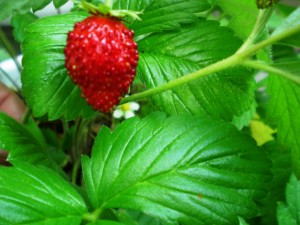
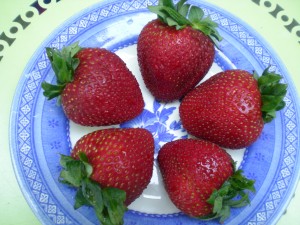


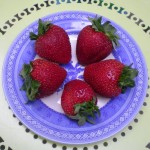



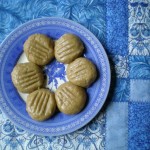
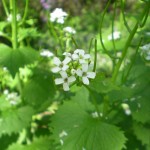







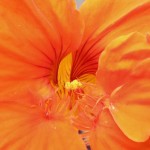



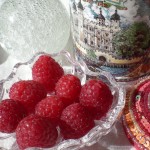


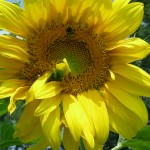
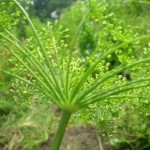
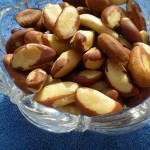

This takes me back. These memories are probably part of why I love strawberries so much. It could also be in the genes because my girls love them too!
Those were fun times! Of course, I am happy to be able to buy them by the pint now, too. 😉
Sigh, those were the days! If you’d had the pleasure of having big brother Andy take you on any of those quests, you’d have also remembered threats of rattlesnakes under every rock on Seelye’s hill (never knew the spelling, BTW). Another wonderful article, Laura! I’m sharing it with all my FB friends.
Smile. Little brother Andy probably heard it from me, or saw those snakes himself. (I did see one once.) Those were well-guarded strawberries. Whole Foods is much easier. Wink.
Gretchen – thanks for linking to this post from your facebook page! Laura, you have such a way with words! Thanks for a slice of childhood memories 🙂
Thank you, Michelle. I’m glad you enjoyed it! xo Laura
hi Laura, if I plant them in a container on my balcony, do I need to provide a climbing structure or do they climb the wall by themselves? I’m very keen!
Hi Lorna! They do not need to climb, so all you need is a large container with a hole/holes on the bottom for good drainage and some rich soil. I use well-composted leaf mulch. Keep them watered and be patient, as they take their sweet time to get going. Once established, they flourish. Let me know how it works for you. Ciao, bella! 🙂
Can’t wait to try! will let u know 🙂 Lxx